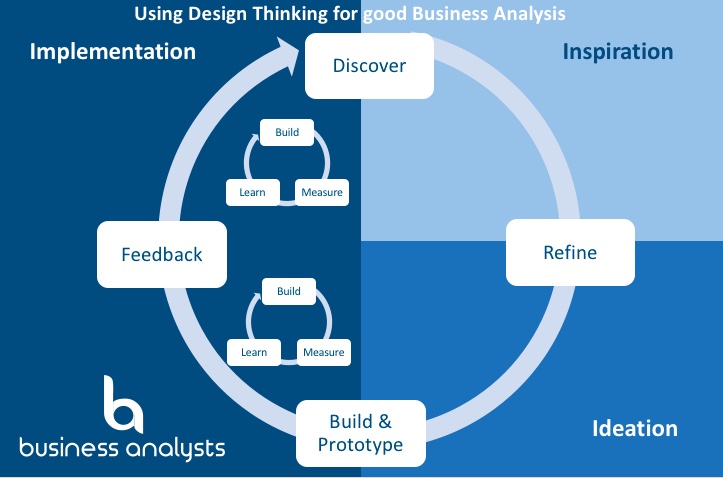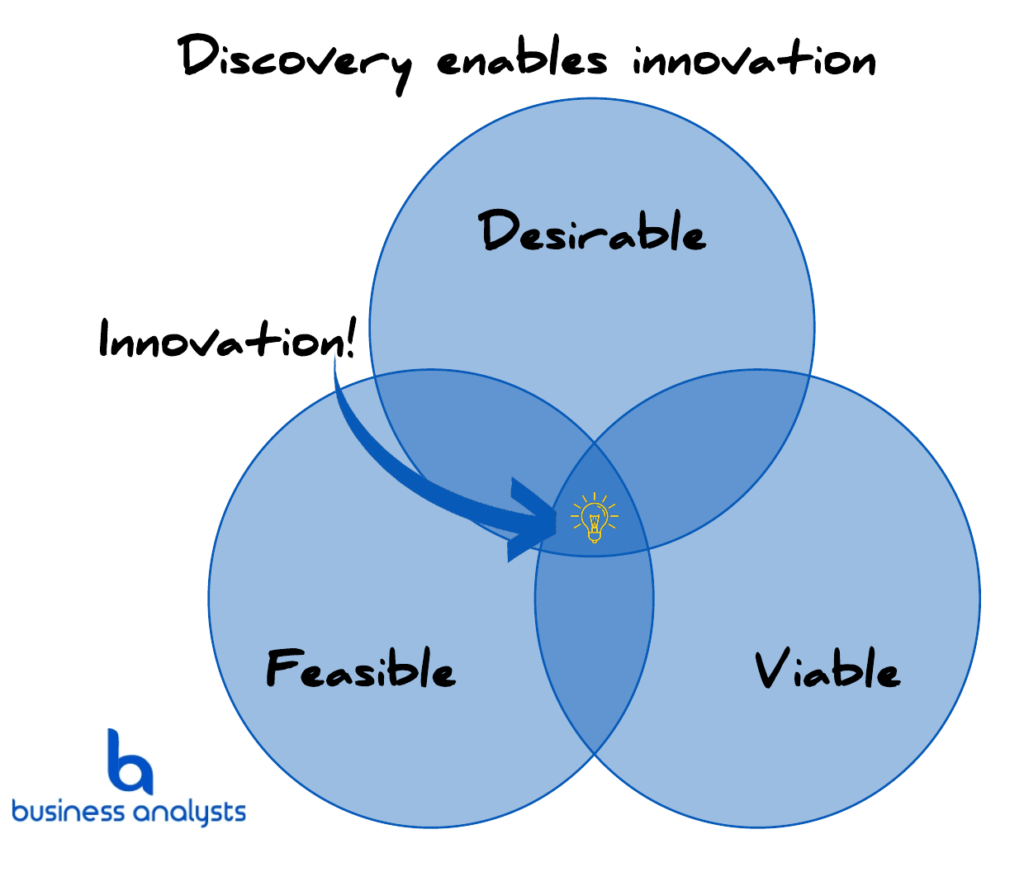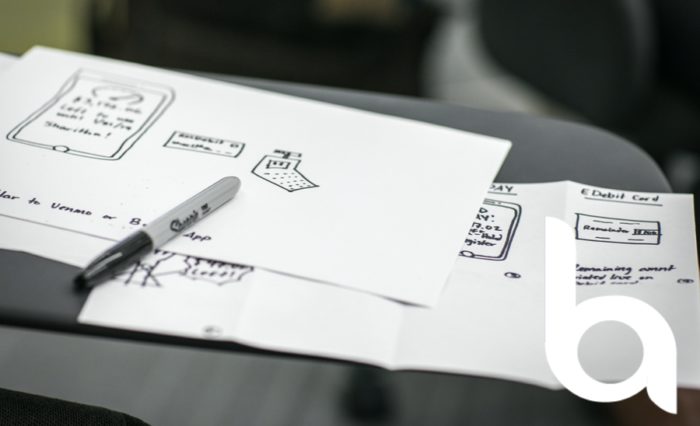The role of a Business Analyst is broad, but typically it comes down to understanding business needs, value & requirements and assisting business to make informed decisions. These needs are often muddied by a multitude of internal and external factors. In the end though, the goal is achieving organisational success. As all organisations exist to provide products and services to customers the best way to achieve success is to incorporate design thinking and human-centred design.
Design thinking is a creative approach to solution-based problem solving that puts people at the centre, enabling solutions that people truly want and need 1. While not a new concept, design thinking is making a comeback in the business world and producing a number of positive results. Together with User Experience (UX) and Customer Experience (CX), design thinking lays the groundwork for innovation, development of products and services, and ultimately helps you as a Business Analyst deliver better, stronger and more thorough business analysis.
The main aspect of design thinking is that of a user-centric experience; what is the user thinking and feeling, what is their experience. Business Analysts already consider these factors, but generally not at the level required to dig into design thinking. To dig deeper, the Business Analyst must step outside of their analytical mindset (without disregarding it completely) and let their creativity flow.
By understanding the customer journey and experience, we can get clarity on what the real needs are, and options to address them. Rather than interpreting and explaining what we think our stakeholders need, we can use design to clearly demonstrate what they need through the use of simple language that everyone can understand and use design artefacts to tell the story. When explaining complex issues to a business stakeholder, there’s an increased chance of confusion or misunderstanding if complex (or even mildly complex) approaches are used. Walking a stakeholder through a complex BPMN is a good example of this. But have you tried simplifying that process into a context diagram that uses simple language and a visual approach to explain the process? By changing the way we communicate complex systems or processes to stakeholders using design thinking, we can turn this interaction into a success. As a Business Analyst, clear communication is a core underlying competency. If we just end up confusing stakeholders, we’re not doing our job.
We have broken our analysis technique into four phases that closely align to design thinking, aligning these to the three phases of human-centred design, and will use this series to explain how the various tools and methods available in the BABOK® can help make your business analysis effort much more effective, adaptive and responsive to a rapidly changing business environment.
Phase 1: Discover – We will look at the Inspiration phase of human-centred design and various BABOK® techniques to understand the current state and help develop a more effective discovery stage. How can we use design thinking to understand the current state as fast as possible without adding risk?
Phase 2: Refine – Now that you have built a solid foundation and your as-is analysis is complete, how do we transition from Inspiration to Ideation? How we validate the current state with the business, turn our value streams into epics, iterate our work, and define requirements?
Phase 3: Prototype and Build – At this point we start to look at the future state, what will the to-be processes be, how we move through the Ideation phase. Prototyping of solutions, iterative building, role-playing and storytelling all play a part here.
Phase 4: Feedback – The Implementation phase of human-centred design, this is where a tangible product or service takes shape. This phase will often loop iteratively with Build & Prototype, and even back to Refine on occasion. Here we will be looking at our requirements and user stories to make sure they have been met and fine-tuning our processes to support the finished build.
My view of design thinking is an iterative process to Discover, Refine, Build & Prototype, and Feedback which helps deliver the business need, value and requirements.

Phase 1: Discover the current state through Inspiration
When we think of discovery, we understand there is a level of uncertainty or a realm of unknowns that we need to identify in order to deliver a successful project. Unknowns lead to potential roadblocks later with scope creep, failing to properly identify or understand the problem/opportunity, and ensuring a solution is fit for purpose. Through the use of a few techniques, we can better define the problem up front and ensure we have clear scope for the project. To do this, there are three key stages a Business Analyst can use to do this well.
Stage 1: Planning – The BABOK® has a chapter called Business Analysis Planning and Monitoring, so for the sake of brevity I won’t go into too much detail here. In this stage, the Business Analyst should be laying the foundations for success, by planning the core activities, tasks and deliverables needed, usually in alignment to a schedule. In the planning stage, the BA should also be performing initial stakeholder analysis activities such as Mind Mapping or creating Stakeholder Lists, Maps or Personas to understand which stakeholders are relevant to the outcome, what the BA requires from them, and the best way to engage with each stakeholder. An early activity to complete with stakeholders is to identify and prioritise the expected business outcomes for the project. Use Interviews, Mind Mapping, Value Stream Mapping or Workshops to identify the key business outcomes, and Grouping (high, medium, low) or negotiation to establish the priorities of the business outcomes. These outcomes will play a crucial role later in the project for traceability.
Stage 2: Current state analysis – A key part of the discovery process is eliciting the current state. What product or services are being delivered to customers. This is where most of the work should occur in this phase, and relies on a wide range of techniques. The purpose of this analysis is to understand what the intent of the project is, define scope for the project, understand the current processes, and validate everything with the stakeholders. Current state analysis should always be done, from a new start-up to an existing business or service, there are always unknowns that need to be discovered. Some of the activities you may perform at this stage include:
- Develop a problem or opportunity statement – Work with the key stakeholders to define and establish the problem in clear and agreed upon terms. This could include a context diagram of the problem, developed in a workshop on a whiteboard, or a mission/vision statement that provides verbal context to why the project is happening. BABOK® “Business needs are the problems and opportunities of strategic importance faced by the enterprise.
- Problem statements are about resolving an issue that exists, opportunity statements are about taking advantage of identified opportunities to enhance the organisation. A ‘How Might We’ statement can be used to help develop the problem or opportunity statement, and should ultimately describe an opportunity. Other techniques available to establish a statement could include Brainstorming and the 5 Why’s.
- Define a clear scope statement – As part of the same initiation workshop, the Business Analyst should work with the stakeholders to establish clear scope for the project. Use Post-It notes to assist in identifying assumptions, constraints, and dependencies. Post-It’s can be placed into labelled buckets for anonymity or displayed on a board for all to see. BA-led discussion should follow to assist in prioritising and establishing the final agreed upon scope. Scope Modelling or a Business Model Canvas can be created to visually capture and validate scope statements.
- Prepare for and elicit the current state – There is always a current state, even if the business or service is new & is in start-up mode. What is happening in the market, who are the competitors and what are they doing? These are all valid current state questions. A successful Business Analyst will have a clear plan and toolkit ready for elicitation. Mind Mapping, User Stories, the use of Personas, Journey Mapping, Value Stream Mapping, and Collaborative Gaming are just some of the techniques available to help elicit the current state from your audience. The stakeholders, problem or opportunity and scope have been clearly identified in previous activities, now it’s time to conduct your workshops, interviews and other techniques to elicit the current state.
Stage 3: Document the current state – Ensure the processes match products and service offerings. The use of context models and diagrams, as well as process modelling will help to validate the current state with key stakeholders. The format and structure of the outputs should be agreed with the stakeholders in the planning stage, and distributed for feedback.
By planning, eliciting and specifying a current state, Business Analysts can ensure they are well positioned to capture requirements and develop a future state that is desirable, viable, and feasible for the organisation. Finding this balance is where innovation generally occurs, which is something we should strive to achieve in everything we do.

Phase 2: Refine through Ideation
1 http://masteringbusinessanalysis.com/mba056-design-thinking-for-better-business-analysis/
